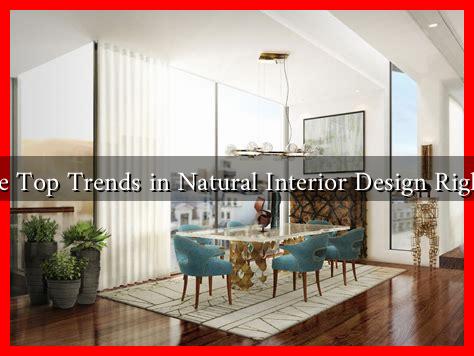-
Table of Contents
- What are Top Trends in Natural Interior Design Right Now?
- 1. Biophilic Design: Bringing the Outdoors In
- 2. Sustainable Materials: Eco-Friendly Choices
- 3. Earthy Color Palettes: A Nod to Nature
- 4. Minimalism Meets Natural Design
- 5. Textures and Layers: Adding Depth to Spaces
- Conclusion: Embracing Nature in Interior Design
What are Top Trends in Natural Interior Design Right Now?
As we move further into the 2020s, the world of interior design is increasingly embracing natural elements. The trend towards natural interior design reflects a growing awareness of sustainability, wellness, and the desire to create spaces that foster a connection with nature. This article explores the top trends in natural interior design, providing insights into how you can incorporate these elements into your own home.
1. Biophilic Design: Bringing the Outdoors In
Biophilic design is a concept that emphasizes the human connection to nature. It incorporates natural elements into interior spaces to enhance well-being and productivity. This trend is gaining traction as more people recognize the mental and physical health benefits of being close to nature.
- Natural Light: Maximizing natural light through large windows or skylights can create a more inviting and uplifting atmosphere.
- Indoor Plants: Incorporating a variety of indoor plants not only purifies the air but also adds a vibrant touch to any room.
- Natural Materials: Using materials like wood, stone, and clay can create a tactile connection to the natural world.
According to a study by the University of Exeter, incorporating biophilic design elements can increase productivity by up to 15%. This makes it a compelling choice for both residential and commercial spaces.
2. Sustainable Materials: Eco-Friendly Choices
As environmental concerns continue to rise, the demand for sustainable materials in interior design is at an all-time high. Homeowners are increasingly opting for eco-friendly options that reduce their carbon footprint.
- Reclaimed Wood: Using reclaimed wood for flooring, furniture, or accent walls not only adds character but also reduces the need for new timber.
- Bamboo: This fast-growing plant is a sustainable alternative to traditional hardwoods and is often used in flooring and furniture.
- Recycled Materials: Items made from recycled glass, metal, or plastic are becoming popular choices for decor and furnishings.
According to a report by Grand View Research, the global green building materials market is expected to reach $1 trillion by 2027, highlighting the growing importance of sustainability in design.
3. Earthy Color Palettes: A Nod to Nature
Color plays a crucial role in setting the mood of a space. Currently, earthy color palettes are trending, with shades inspired by nature taking center stage.
- Warm Neutrals: Colors like beige, taupe, and soft browns create a calming environment.
- Greens and Blues: Shades of green and blue evoke feelings of tranquility and connection to the outdoors.
- Terracotta and Rust: These warm, earthy tones add depth and warmth to interiors.
Designers are increasingly using these colors to create harmonious spaces that promote relaxation and well-being. A survey by Sherwin-Williams found that 40% of homeowners prefer earthy tones for their living spaces.
4. Minimalism Meets Natural Design
The minimalist movement continues to influence interior design, but it is now merging with natural elements to create a more inviting aesthetic. This trend focuses on simplicity while incorporating organic materials and forms.
- Functional Furniture: Pieces that serve multiple purposes help reduce clutter while maintaining a natural look.
- Organic Shapes: Furniture and decor with soft, flowing lines mimic natural forms and create a sense of calm.
- Open Spaces: Emphasizing open floor plans allows for a more fluid connection between different areas of the home.
According to a report by the American Institute of Architects, 60% of homeowners are looking for open floor plans that promote a sense of spaciousness and connection.
5. Textures and Layers: Adding Depth to Spaces
Incorporating various textures is essential for creating a warm and inviting atmosphere. Natural materials can be layered to add depth and interest to a room.
- Textured Fabrics: Linen, cotton, and wool can be used in upholstery and curtains to create a cozy feel.
- Natural Rugs: Jute, sisal, and wool rugs add warmth and texture to floors.
- Layered Lighting: Combining ambient, task, and accent lighting can enhance the natural feel of a space.
According to a survey by Houzz, 70% of homeowners are focusing on texture to create a more inviting atmosphere in their homes.
Conclusion: Embracing Nature in Interior Design
The trends in natural interior design reflect a broader cultural shift towards sustainability, wellness, and a deeper connection with nature. By incorporating biophilic elements, sustainable materials, earthy color palettes, minimalist principles, and varied textures, homeowners can create spaces that are not only beautiful but also promote well-being. As we continue to navigate the complexities of modern life, these design trends offer a pathway to create serene and harmonious environments that nurture both the body and mind.
For more insights on sustainable design practices, visit Green Building Advisor.


